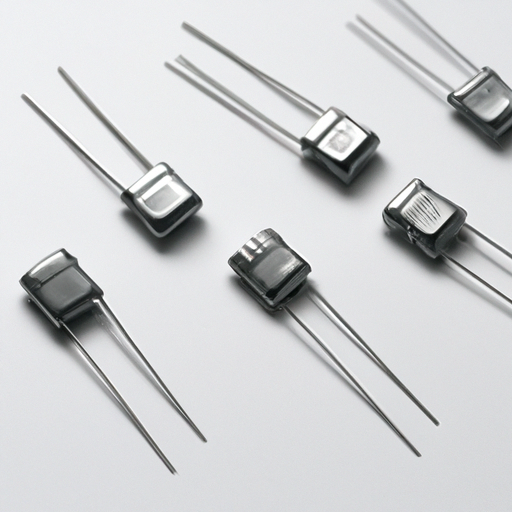Fixed resistors are electronic components that are used to limit the flow of electric current in a circuit. They are designed to have a specific resistance value that remains constant, hence the name "fixed resistor". These components are essential in various electronic devices and systems, as they help control the flow of electricity and protect other components from damage.

One of the most important product standards for fixed resistors is the resistance tolerance. This refers to the allowable deviation from the specified resistance value. For example, a resistor with a resistance value of 100 ohms and a tolerance of ±5% means that the actual resistance of the resistor can be anywhere between 95 ohms and 105 ohms. The tighter the tolerance, the more precise the resistor is in terms of its resistance value. Common tolerance values for fixed resistors include ±1%, ±5%, and ±10%.
Another important product standard for fixed resistors is the power rating. This indicates the maximum amount of power that the resistor can safely dissipate without overheating or failing. The power rating is typically measured in watts and is determined by factors such as the resistor's size, construction, and material. It is important to select a resistor with a power rating that is suitable for the application to prevent damage or failure.
In addition to resistance tolerance and power rating, fixed resistors must also meet certain standards for temperature coefficient, voltage rating, and reliability. The temperature coefficient specifies how the resistance of the resistor changes with temperature, while the voltage rating indicates the maximum voltage that the resistor can withstand without breaking down. Reliability standards ensure that the resistor will perform consistently over its expected lifespan without premature failure.
One of the most widely recognized product standards for fixed resistors is the International Electrotechnical Commission (IEC) 60062 standard. This standard defines the color coding system used to indicate the resistance value, tolerance, and temperature coefficient of fixed resistors. The color bands on the resistor's body provide a quick and easy way to identify these parameters without the need for additional testing or measurement.
In addition to the IEC standard, fixed resistors may also be subject to other industry-specific standards such as those set by the Institute of Electrical and Electronics Engineers (IEEE) or the Electronic Industries Alliance (EIA). These standards help ensure that fixed resistors are compatible with other components and systems, and that they meet the requirements of specific applications or industries.
Overall, product standards for fixed resistors are essential for ensuring the quality, performance, and reliability of these electronic components. By adhering to these standards, manufacturers can produce resistors that meet the needs of their customers and perform consistently in a wide range of applications. Whether used in consumer electronics, industrial equipment, or automotive systems, fixed resistors play a crucial role in controlling the flow of electricity and maintaining the integrity of electronic circuits.
Fixed resistors are electronic components that are used to limit the flow of electric current in a circuit. They are designed to have a specific resistance value that remains constant, hence the name "fixed resistor". These components are essential in various electronic devices and systems, as they help control the flow of electricity and protect other components from damage.

One of the most important product standards for fixed resistors is the resistance tolerance. This refers to the allowable deviation from the specified resistance value. For example, a resistor with a resistance value of 100 ohms and a tolerance of ±5% means that the actual resistance of the resistor can be anywhere between 95 ohms and 105 ohms. The tighter the tolerance, the more precise the resistor is in terms of its resistance value. Common tolerance values for fixed resistors include ±1%, ±5%, and ±10%.
Another important product standard for fixed resistors is the power rating. This indicates the maximum amount of power that the resistor can safely dissipate without overheating or failing. The power rating is typically measured in watts and is determined by factors such as the resistor's size, construction, and material. It is important to select a resistor with a power rating that is suitable for the application to prevent damage or failure.
In addition to resistance tolerance and power rating, fixed resistors must also meet certain standards for temperature coefficient, voltage rating, and reliability. The temperature coefficient specifies how the resistance of the resistor changes with temperature, while the voltage rating indicates the maximum voltage that the resistor can withstand without breaking down. Reliability standards ensure that the resistor will perform consistently over its expected lifespan without premature failure.
One of the most widely recognized product standards for fixed resistors is the International Electrotechnical Commission (IEC) 60062 standard. This standard defines the color coding system used to indicate the resistance value, tolerance, and temperature coefficient of fixed resistors. The color bands on the resistor's body provide a quick and easy way to identify these parameters without the need for additional testing or measurement.
In addition to the IEC standard, fixed resistors may also be subject to other industry-specific standards such as those set by the Institute of Electrical and Electronics Engineers (IEEE) or the Electronic Industries Alliance (EIA). These standards help ensure that fixed resistors are compatible with other components and systems, and that they meet the requirements of specific applications or industries.
Overall, product standards for fixed resistors are essential for ensuring the quality, performance, and reliability of these electronic components. By adhering to these standards, manufacturers can produce resistors that meet the needs of their customers and perform consistently in a wide range of applications. Whether used in consumer electronics, industrial equipment, or automotive systems, fixed resistors play a crucial role in controlling the flow of electricity and maintaining the integrity of electronic circuits.